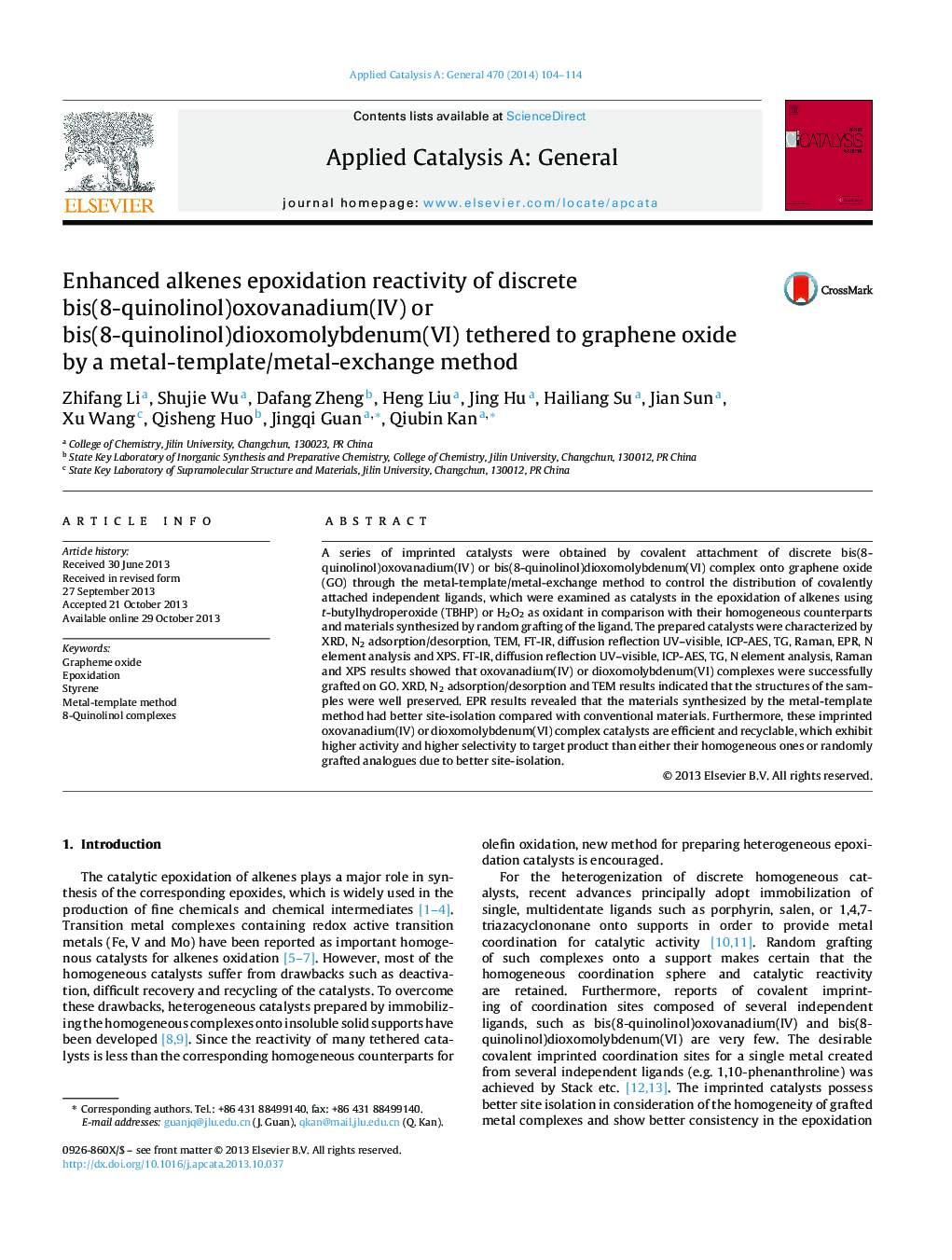| Article ID | Journal | Published Year | Pages | File Type |
|---|---|---|---|---|
| 39985 | Applied Catalysis A: General | 2014 | 11 Pages |
•A series of imprinted catalysts were successfully synthesized. through a metal-template/metal-exchange method.•Characterized by XRD, FT-IR, UV–visible, ICP-AES, TEM, TG, Raman, BET and XPS.•The imprinted catalysts were active and showed good recoverability.
A series of imprinted catalysts were obtained by covalent attachment of discrete bis(8-quinolinol)oxovanadium(IV) or bis(8-quinolinol)dioxomolybdenum(VI) complex onto graphene oxide (GO) through the metal-template/metal-exchange method to control the distribution of covalently attached independent ligands, which were examined as catalysts in the epoxidation of alkenes using t-butylhydroperoxide (TBHP) or H2O2 as oxidant in comparison with their homogeneous counterparts and materials synthesized by random grafting of the ligand. The prepared catalysts were characterized by XRD, N2 adsorption/desorption, TEM, FT-IR, diffusion reflection UV–visible, ICP-AES, TG, Raman, EPR, N element analysis and XPS. FT-IR, diffusion reflection UV–visible, ICP-AES, TG, N element analysis, Raman and XPS results showed that oxovanadium(IV) or dioxomolybdenum(VI) complexes were successfully grafted on GO. XRD, N2 adsorption/desorption and TEM results indicated that the structures of the samples were well preserved. EPR results revealed that the materials synthesized by the metal-template method had better site-isolation compared with conventional materials. Furthermore, these imprinted oxovanadium(IV) or dioxomolybdenum(VI) complex catalysts are efficient and recyclable, which exhibit higher activity and higher selectivity to target product than either their homogeneous ones or randomly grafted analogues due to better site-isolation.
Graphical abstractA series of imprinted catalysts were obtained by the covalent attachment of a discrete bis(8-quinolinol)oxovanadium(IV) and bis(8-quinolinol)dioxomolybdenum(VI) complexes onto GO through the metal-template/metal-exchange method. The imprinted oxovanadium(IV) and dioxomolybdenum(VI) complexes are efficient and recyclable, which exhibit higher activity and better product selectivity than either their homogeneous ones or randomly grafted analogues due to better site-isolation.Figure optionsDownload full-size imageDownload high-quality image (70 K)Download as PowerPoint slide
